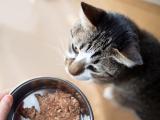Feb 15, 2011
Avian flu strikes again in Japan's poultry, wild birds
Japan's Aichi prefecture reported an avian influenza outbreak at a commercial poultry farm in the city of Shinshiro, Aichi's second outbreak in a month, Kyodo News reported today. The sudden death of about 20 birds at the farm yesterday prompted tests, which were positive for H5 influenza. Local officials are culling the remaining 17,500 birds on the farm and have banned the movements of poultry at 18 farms within 10 km of the affected farm. In other avian flu developments, Japan's agriculture department yesterday reported more virus findings in wild birds, according to a report to the World Organization for Animal Health (OIE). The report covers five H5N1 finding in birds found dead from four different prefectures: two from Miyazaki and one each from Hokkaido and Nagasaki. They were found between Jan 31 and Feb 6. Affected birds included two Mandarin ducks, a tufted duck, a whooper swan, and a peregrine falcon.
Feb 14 OIE report
Rare feline case of H1N1 reported in Wisconsin
A confirmed case of 2009 H1N1 influenza in a cat in Wisconsin marks the first known US case in a pet since January 2010, the American Veterinary Medical Association (AVMA) said in a news release yesterday. Lab tests confirmed the case in the 6-year-old cat yesterday, the AVMA said. A second cat in the same household tested negative after getting very sick with respiratory symptoms but is now believed to have had the same virus. Both cats had to be euthanized after failing to respond to treatment, the group reported. The cats' owner had had flu-like symptoms before the cats got sick and is presumed to be the source of their infection. The AVMA said pet owners should be aware that some viruses can pass from humans to animals and should monitor their pets' health closely. Besides humans and cats, the H1N1 virus has been found in pigs, birds, ferrets, and a dog, but there have been no confirmed cases of pets spreading the virus back to people. Signs of H1N1 infection in a pet may include lethargy, loss of appetite, fever, runny nose or eyes, sneezing, coughing, or changes in breathing.
Feb 14 AVMA press release
Michigan sees spike in pertussis infections
The number of yearly pertussis infections in Michigan is rising, with a preliminary total of 1,519 cases in 2010, up sharply from 902 reported the previous year. The Michigan Department of Community Health (MDCH) said in a recent statement that Michigan's rise in pertussis cases mirrors an overall national rise in infections. The MDCH said it first noticed the increase in 2008, when 315 cases were reported. It recommended that parents ensure that infants and young children get their complete tetanus, diphtheria, and pertussis (Tdap) series and that adolescents and adults receive boosters, even if they received all of the recommended vaccines. In January the US Centers for Disease Control and Prevention (CDC) highlighted Michigan's rise in pertussis cases in its update on outbreaks. The CDC also pointed out high numbers of reports in California, which include 8,383 and 10 infant deaths in 2010, as well as in Columbus, Ohio, and the surrounding Franklin County area, which reported 966 cases in 2010, its highest in 25 years.
MDCH statement
Jan 11 CDC pertussis outbreak information
Group reports satellite prediction of hantavirus outbreaks
Outbreaks of the often deadly rodent-borne hantavirus might be predicted months in advance by using satellite images to track surges in vegetation that lead to spikes in mouse populations, University of Utah researchers report. "It's a way to remotely track a disease without having to go out and trap animals all the time," said Denise Dearing, professor of biology at the University of Utah and co-author of a study to be published online tomorrow in Global Ecology and Biogeography, according to a University of Utah press release today. "The satellite measures the greenness of the Earth, and we found that greenness predicts deer mouse population density," she said. The study combined satellite imaging with data from thousands of mice captured over 3 years in central Utah. The total number of trapped mice and the number of mice with the disease, a strain of hantavirus known as Sin Nombre, both climbed after vegetation peaks. Sin Nombre virus, which can cause hemorrhagic fever, is carried by rodents, primarily deer mice, in the western United States. In humans, it causes a disease known as hantavirus pulmonary syndrome, which, according to CDC data, can cause death in half of patients. The surveillance method might also be used to detect other rodent-borne diseases such as bubonic plague, Lassa fever, and other hemorrhagic fevers, according to the press release.
Feb 15 University of Utah press release
CDC hantavirus background information

















